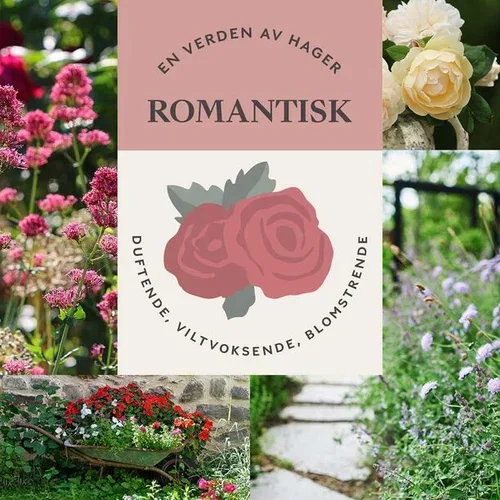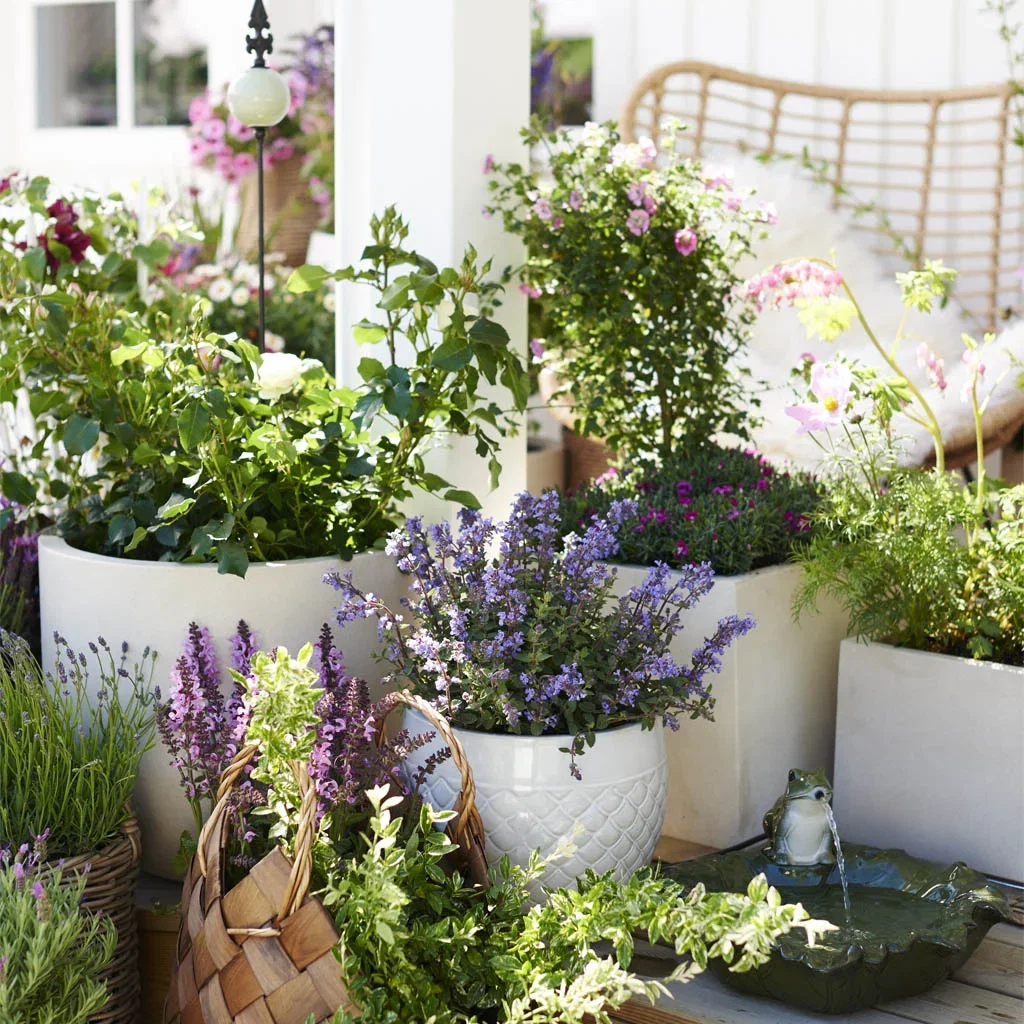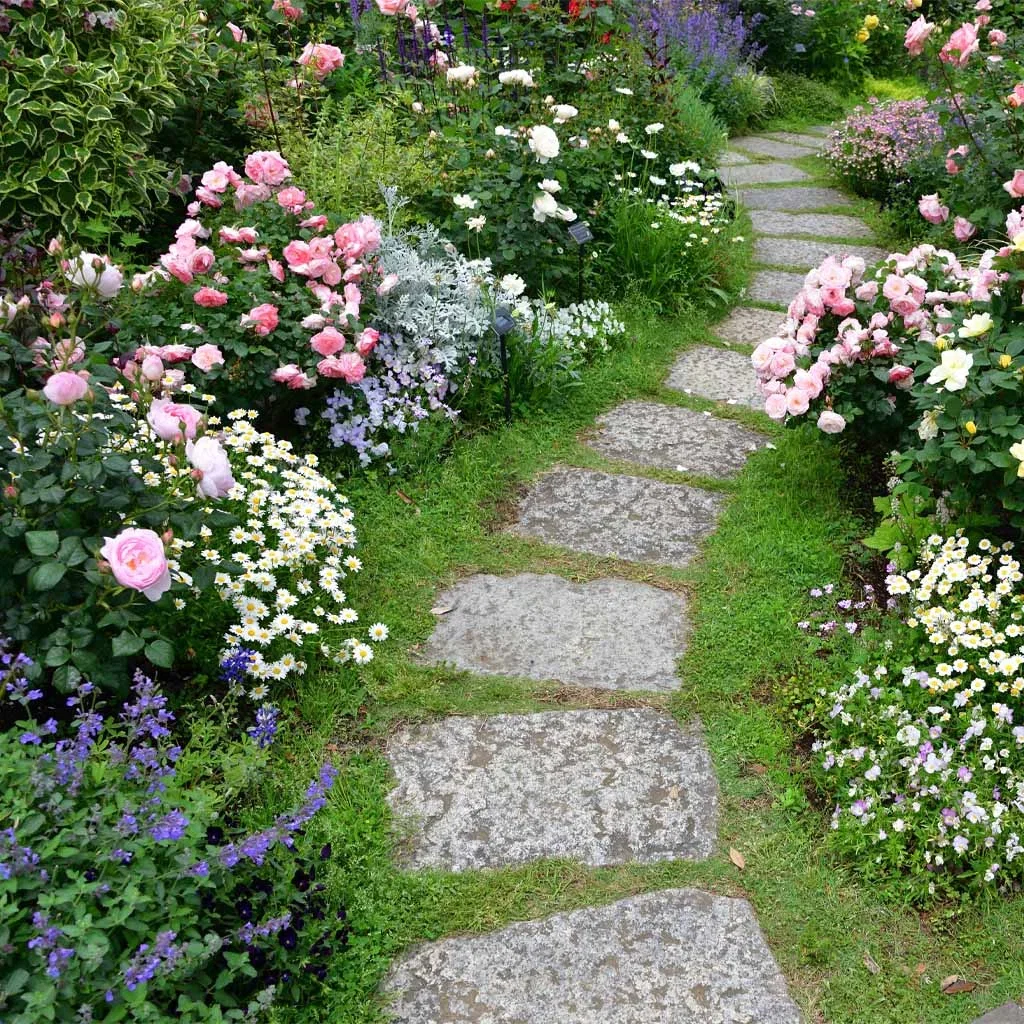ROMANTIC GARDEN – fragrant, sprawling and blooming
This garden style is inspired by the English garden, a tribute to nature’s abundance and beauty—where roses and other fragrant flowers take center stage.

If you long for a garden that’s a feast for the eyes and a delight for the senses, the romantic garden might be just what you’re looking for. It’s all about creating a lush, blooming environment that’s both beautiful and fragrant.
Many would also describe this style as a bit wild. The romantic garden stands apart from more formal garden styles with its free and often unruly character. Colors and shapes are mixed freely to create a sense of charming disorder and natural beauty.
How to create a romantic garden
Here are some tips to help you plan and create a romantic garden:
- Roses and flowers
The most important element in a romantic garden is roses. Plant different varieties, from climbing roses to shrub roses, to create a rose garden with variety in color and form. Supplement with other flowering plants like lavender, peonies, and clematis to create layers of fragrance and color that change throughout the season.
- Wild nature
Let some parts of the garden grow more freely. This gives a sense of spontaneity and natural beauty.
- Fragrances
Choose plants not only for their appearance but also for their scent. Fragrant flowers like roses, lavender, and jasmine contribute to the right atmosphere.
- Hidden spots
Create small, hidden areas in the garden, such as a little bench under a rose bush or a table surrounded by blooming plants. This enhances the feeling of romance.
- Paths and walkways
Use natural materials like gravel or brick to create winding garden paths that lead visitors through the garden.
- Water in the garden
A small water feature, like a fountain or a little garden pond, can have a calming effect and reflect the beauty of the garden.
- Seasonal variations
Plan for the garden to be beautiful in different seasons. Plant bulbs for early spring flowers, summer flowers in pots for extra color, and perennials that give autumn hues.

Popular plants in a romantic garden
Plants that offer both beauty and fragrance are sure winners in a romantic garden. Here are our top recommendations:
- Roses – Different types of roses are the core of any romantic garden.
- Lavender – For fragrance and purple color.
- Peonies – Large, dramatic flowers.
- Clematis – As a vertical accent.
- Hydrangea – For lush blooms.
- Lilies – For height and drama.
- Delphiniums – For tall, colorful spires.
- Iris – For elegant flowers.
- Forget-Me-Nots – For small, blue, romantic flowers.
- Foxglove – For tall, impressive flowers.
- Anemones – For delicate flowers.
- Astilbe – For feathery flowers.
- Daisies – For simplicity and charm.
- Wisteria – For magnificent hanging clusters.
- Jasmine – For a delightful fragrance.
Be sure to choose plants that suit your local climate, soil, and growing conditions.

Colors and shapes in the romantic garden
The color palette in a romantic garden is often dominated by soft pastel shades such as lavender, pink, light blue, and white. These colors stand out beautifully against the green elements of the garden.
In a romantic garden, the shapes are varied and often organic. The flowers tend to be lush and abundant. To frame the wealth of colors and scents, hedges are often used as a natural boundary. A well-trimmed hedge provides structure and form, while also creating a backdrop that highlights the soft shapes and colors of the blooming plants.
Paths in a romantic garden are typically winding and inviting, made from natural stone or old brick. They lead visitors on a journey through the garden, past fragrant flowers and charming little nooks. These paths contribute to feelings of adventure and mystery, which are characteristic of the romantic garden.
A greenhouse also fits into this style. It serves not only as a functional part of the garden for cultivation but also becomes a beautiful and decorative element of the overall impression. The winding paths through a romantic garden, made of natural stone or old brick, lead visitors on a journey through the garden, past fragrant flowers and charming nooks. These paths contribute to feelings of adventure and mystery, which are so characteristic of the romantic garden.

You are here:
- Garden inspiration - A world of gardens - Romantic garden








